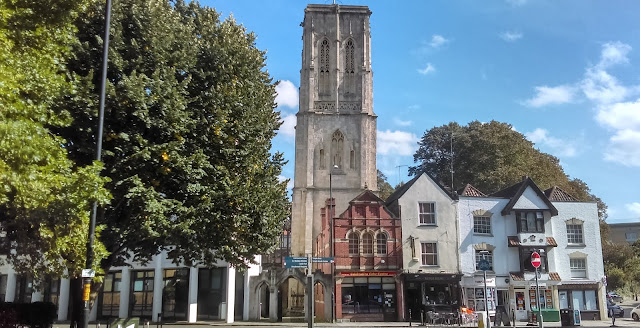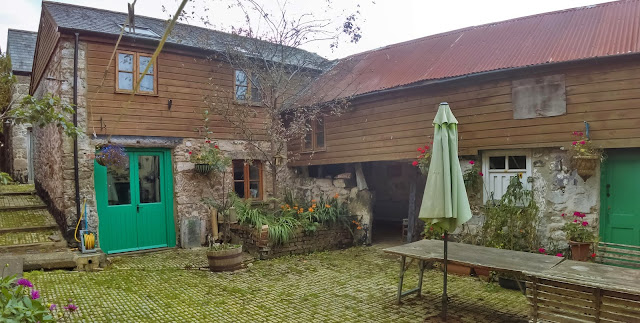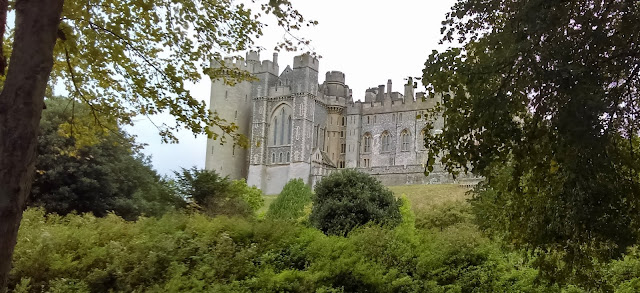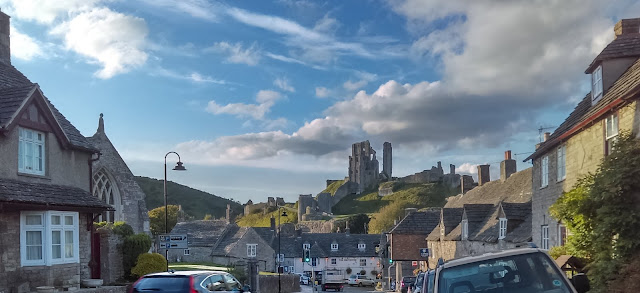
Bristol was probably the most unexpectedly interesting part of the whole trip through the South of England. Steve and I decided to go there as our last stop simply because neither of us had ever been. We were pleasantly surprised to find that Bristol is actually a very cool city. Not only is it the birthplace of the famous graffiti artist, Banksy, but it's also loaded with unusual history, unique street food and just a ton of cool things to see. Needless to say, our expectations were blown out of the water.

Speaking of water, that's where our visit began - on the Kennet and Avon Canal. It turns out you can actually take this canal from Bristol to London via Bath. We got on a boat tour that took us around the city using this waterway. Right at the start we saw a funny looking bridge which we later learned is called Pero's Bridge. Opened in 1999, this bridge has two funnel shaped sculptures on the sides that look like Shrek's ears. As it turns out, these "ears" are actually counterweights which provide balance and stability - who knew!

During the tour we also saw lots of colorful buildings, similar to one's I've seen in Scandinavia, and a number of really cool boats ranging from historic sailing ships to modern designer houseboats. After the tour came to an end, we grabbed a snack from one of the many tables selling homemade sweets, and stopped in at the tourism office for some information. From there we began what's referred to as the Curiosities Trail. One of our first stops was St Mary Redcliffe Church - referred to by Queen Elizabeth I as "the fairest, goodliest and most famous parish church". She was far less kind to the women of Bristol, saying to the mayor "Good Lord Master Mayor, how plain the women of Bristol be!"

The next landmark was the Temple Church tower which leans at a precarious angle and has done so since the 14th century. The army, clearing WW2 bomb damage wanted to pull the tower down thinking that a bomb had caused the lean. Only the entreaties of citizens saved this famous landmark.

We then passed through Castle Park and arrived at St Nicholas Church - the only public clock in England with a second hand. Behind the church we found a huge variety of tasty street food at the food market. After having something to eat, we stopped in front of the Bristol Exchange where four brass 'Nails' mark another 'curiosity'. Back in the day, merchants used to strike these nails when a deal was completed; hence the expression, "pay on the nail".

Next, we came to a neat little thoroughfare, which dates back to 1669, and followed it up to the top of the Christmas Steps. Near the top of the steps, we came across the Foster's Almshouses. Rebuilt in the present French style in the 19th century, the Foster's Almshouses were originally constructed as charitable housing with spaces for thirteen men and thirteen women. According to Steve, many of these houses are supported by trusts set up centuries ago and, if you belong to that trade or can prove your ancestors belonged to it, you may be able to live in one when you get old.

At this point, we had pretty much reached the end of the list, save for the burial place of the supposed inventor of the blanket. So, we pulled out the other list which directed us to a few 'Banksys' around town - little known fact: Banksy was born in Bristol. I guess that explains why there seems to be so many copycat graffiti artists running around.

At the end of the day, before heading back to London so I could catch my flight to Madrid the following day, we had a cup of tea and some cheesecake from the food stands. Then we sat at the edge of the canal for a bit while a historic sailing ship and some SUP boarders went by.













